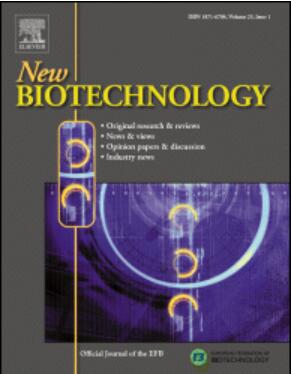Differential polyamine metabolism in CHO cell lines: Insights into cell growth and antibody quality
IF 4.9
2区 生物学
Q1 BIOCHEMICAL RESEARCH METHODS
引用次数: 0
Abstract
Chinese hamster ovary (CHO) cell lines are widely utilized host cell lines in cell culture bioprocessing. Although they originated from a common ancestor, accumulated genetic mutations have led to significant heterogeneity in their behavior under specific conditions. This study investigates the cell line-specific impact of polyamine (PUT; putrescine) withdrawal on the growth, metabolism, and antibody production among three CHO clones derived from different parental cell lines: CHO-K1, CHO-S, and CHO-DG44. CHO-K1 cells strongly depended on external polyamines, showing a 77 % reduction in viable cell density and an 88 % decrease in growth rate under PUT depletion, although their culture longevity was extended. In contrast, CHO-S and CHO-DG44 cells demonstrated greater resilience, with CHO-DG44 experiencing only a 25 % reduction in cell density. PUT deprivation also impacted antibody production across all cell lines, with CHO-K1 displaying the lowest yield, antibody purity and altered charge heterogeneity. Notably, PUT depletion led to increased galactosylation of antibodies, suggesting that modulating PUT levels in the media could be used as a strategy to tailor the quality of therapeutic antibodies. These findings, together, provide valuable insights in the design of cell line-specific media, thereby optimizing both bioprocess efficiency and product quality in biopharmaceutical production.
CHO细胞系的差异多胺代谢:对细胞生长和抗体质量的见解
中国仓鼠卵巢(CHO)细胞系是在细胞培养生物加工中广泛应用的宿主细胞系。尽管它们起源于共同的祖先,但积累的基因突变导致它们在特定条件下的行为存在显著的异质性。本研究探讨了多胺(PUT;从不同的亲本细胞系(CHO- k1, CHO- s和CHO- dg44)中提取的三个CHO克隆的生长、代谢和抗体产生。CHO-K1细胞强烈依赖于外部多胺,尽管其培养寿命延长,但在PUT耗尽的情况下,活细胞密度降低了77% %,生长速度降低了88% %。相比之下,CHO-S和CHO-DG44细胞表现出更大的弹性,CHO-DG44细胞密度仅降低了25% %。PUT剥夺也影响了所有细胞系的抗体产生,CHO-K1的产量最低,抗体纯度最低,电荷异质性也发生了改变。值得注意的是,PUT耗竭导致抗体半乳糖基化增加,这表明调节培养基中的PUT水平可以作为一种策略来定制治疗性抗体的质量。这些发现共同为细胞系特异性培养基的设计提供了有价值的见解,从而优化了生物制药生产中的生物工艺效率和产品质量。
本文章由计算机程序翻译,如有差异,请以英文原文为准。
求助全文
约1分钟内获得全文
求助全文
来源期刊

New biotechnology
生物-生化研究方法
CiteScore
11.40
自引率
1.90%
发文量
77
审稿时长
1 months
期刊介绍:
New Biotechnology is the official journal of the European Federation of Biotechnology (EFB) and is published bimonthly. It covers both the science of biotechnology and its surrounding political, business and financial milieu. The journal publishes peer-reviewed basic research papers, authoritative reviews, feature articles and opinions in all areas of biotechnology. It reflects the full diversity of current biotechnology science, particularly those advances in research and practice that open opportunities for exploitation of knowledge, commercially or otherwise, together with news, discussion and comment on broader issues of general interest and concern. The outlook is fully international.
The scope of the journal includes the research, industrial and commercial aspects of biotechnology, in areas such as: Healthcare and Pharmaceuticals; Food and Agriculture; Biofuels; Genetic Engineering and Molecular Biology; Genomics and Synthetic Biology; Nanotechnology; Environment and Biodiversity; Biocatalysis; Bioremediation; Process engineering.
 求助内容:
求助内容: 应助结果提醒方式:
应助结果提醒方式:


